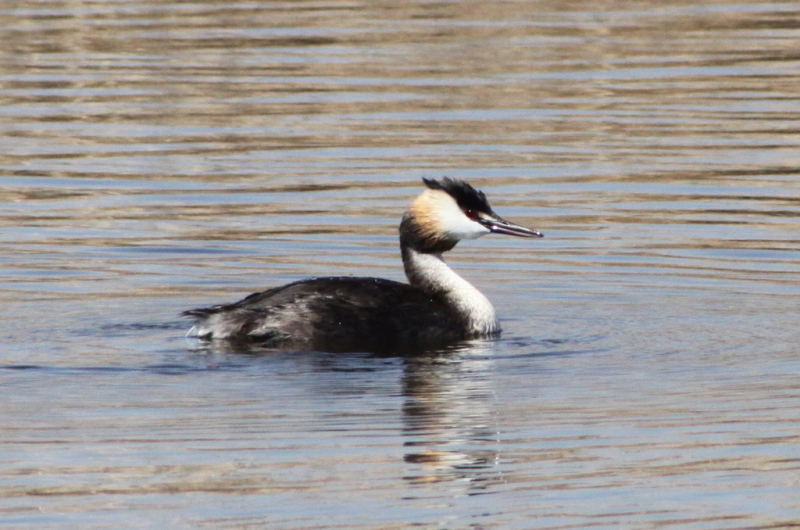Colours
Distinguishing features
Adults are unmistakable in summer with head and neck decorations. In winter, this is whiter than most grebes, with white above the eye, and a pink bill. It is the largest European grebe.
The young are distinctive because their heads are striped black and white. They lose these markings as they mature. (Wikipedia)
Size
- From 46 cm to 51 cm (Length of specimen)
Weight
- From 0.9 kg to 1.5 kg
Wingspan
- From 59 cm to 73 cm
Synonyms
Interesting facts
- Unusually, the young are capable of swimming and diving almost at hatching. The adults teach these skills to their young by carrying them on their back and diving, leaving the chicks to float on the surface; they then re-emerge a few feet away so that the chicks may swim back onto them. (Wikipedia)
Distribution
Distribution and habitat preferences
It breeds in vegetated areas of freshwater lakes. The subspecies P. c. cristatus is found across Europe and Asia. It is resident in the milder west of its range, but migrates from the colder regions. It winters on freshwater lakes and reservoirs or the coast.
The African subspecies, P. c. infuscatus, and the Australasian subspecies ,P. c. australis, are mainly sedentary. (Wikipedia)
Diet
It feeds mainly on fish, but also small crustaceans, insects and small frogs. (Wikipedia)




